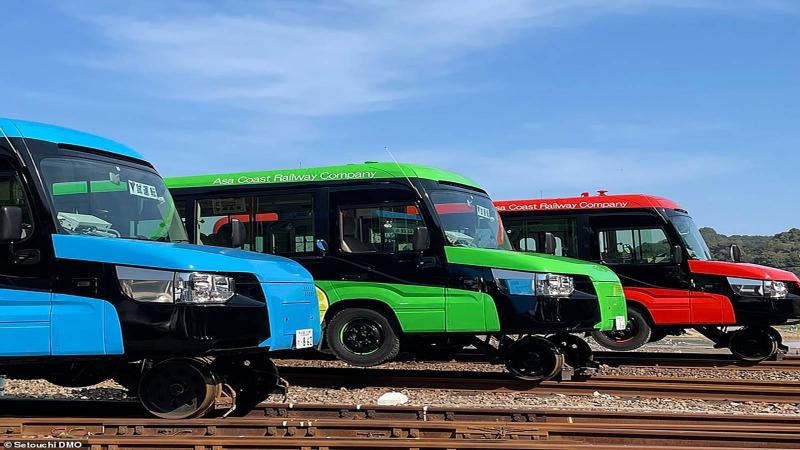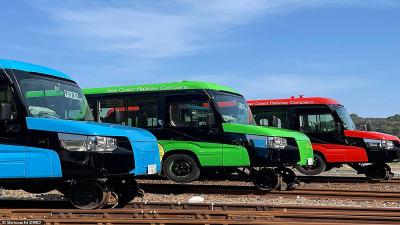In Tokushima Prefecture, Japan, specifically in the city of Kaiyo, which overlooks the Pacific Ocean, a driving demonstration for a bus that transforms into a train was conducted in front of the media. This vehicle is called the DMV, an abbreviation for Dual Mode Vehicle.
The DMV resembles a small bus and operates on regular rubber tires on the road, but when it reaches the railway tracks, steel wheels drop from beneath the vehicle onto the train track, effectively transforming it into a train car. The train wheels lift the front tires off the track while the rear wheels remain lowered to propel the DMV on the railway.
Shigeki Miura, the CEO of Asa Coast Railway, which operates the DMV, stated that these vehicles could assist small towns like Kaiyo, which are facing aging and declining populations, as local transport companies struggle to turn a profit. Miura told Reuters on Friday, "This (DMV) can reach local residents (as a bus) and also transport them to the railway." He added, "Especially in rural areas where there is an increasing elderly population, we expect it to be a very good means of public transportation."
Asa Coast Railway mentioned that the DMV can carry up to 21 passengers and operates at a speed of 60 kilometers per hour (37 miles per hour) on railway lines, and can travel at speeds of up to 100 kilometers per hour (62 miles per hour) on public roads. The DMV operates on diesel fuel, comes in various colors, and will extend along part of the Shikoku Island coast in southern Japan, linking several small towns while offering passengers attractive scenic views. Miura expressed hope that the project would encourage railway enthusiasts throughout Japan to give it a try.




